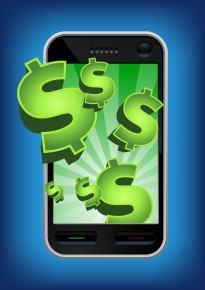2013 has been touted by many Payment Pundits (including us right here on the Perficient FS blog) as “The Year of Mobile”. While many articles and posts have been written about what mobile banking should be, I wanted to take a moment to caution what it might become.
We all know the feeling of checking our mailboxes only to find 3 pounds of useless junk mail mixed in with the one or two items we really care about. Not only is it annoying, but as consumers, many of us just see bulk mail as clutter that goes right into the trash without a second thought. Flash forward to mobile banking and the evolving capability of offering Offers and Rewards. This usually involves either browsing a list of offers that can be chosen and linked to a payment card or app, or when integrated with a smart phone, real-time offers based on current location. Whether you’re “pulling” offers or getting them pushed to you, the torrent is just beginning. 
As we move into 2013, the velocity of offers are increasing as more and more retailers and banks fight to stay “top of mind, top of wallet”. I recently chose to set-up my Apple Passbook. With just a few simple clicks I had added 5 loyalty “cards” to my wallet as well as linked to several payment cards. What happened next was the equivalent of opening the mailbox I mentioned earlier. I immediately noticed at least 4 of my payment and loyalty card products were sending me everything from a free song offer (Starbucks) to discount coupons for candy (Walgreens). Add to that location-based offers from Amex (Best Buy is just around the corner, spend 200 dollars and receive a 20 dollar statement credit), to offers for a free hamburger at In-N-Out (sorry East Coast readers) from Bank of America. My “smart phone” had become a very expensive mailbox, and as a consumer, it’s just more noise to sift through.
While this example is humorous and somewhat a meme for modern marketing, the lesson is clear. Mobile banking offers and rewards will and are becoming “noise to consumers”. I think the important lesson here is twofold:
- Balancing “push vs pull” to consumers is key. The mobile providers that alert the user there are offers available and then let the customer choose what they want, when they want have provided a much less intrusive model for engaging in marketing and driving loyalty and rewards.
- Those providers that prefer to “push” real time offers based on location or check-ins on social media apps such as Foursquare, have to realize context is key. In order to make offers meaningful in this channel, it is critically important to use social listening and data segmentation to target offers that are meaningful. (i.e. if a consumer checks in at Weight Watchers, it’s probably not a good idea to offer 2 dollars off a dozen muffins at the bakery next door).
In closing, mobile offers and rewards are a fantastic and essential tool to drive customer loyalty. While this is a critical part of any mobile strategy, I implore all of us in the business to think about how we offer deals to customers. I know I don’t want to have 2 “mailboxes” of junk to throw away, and I know many of my readers don’t either.

